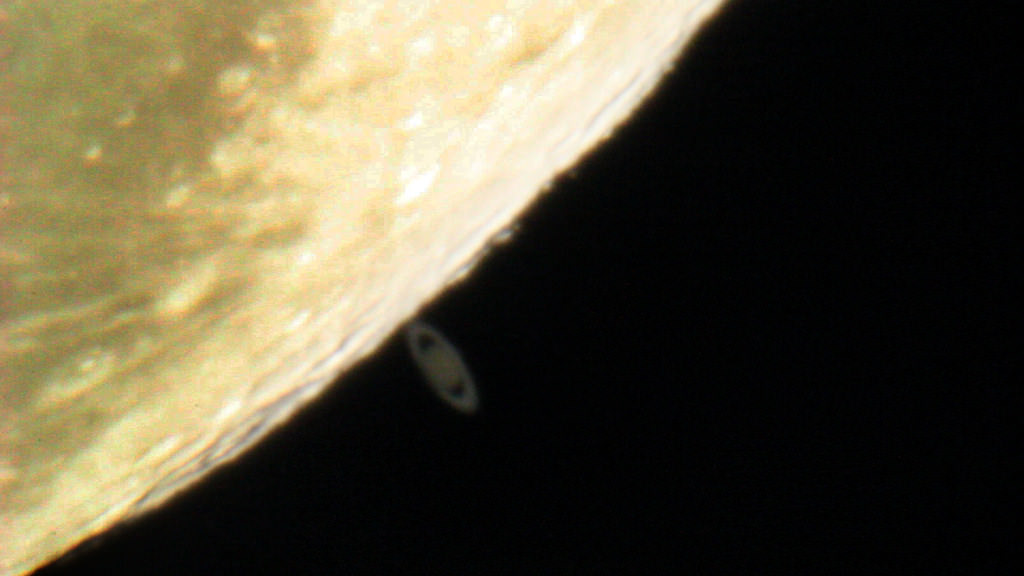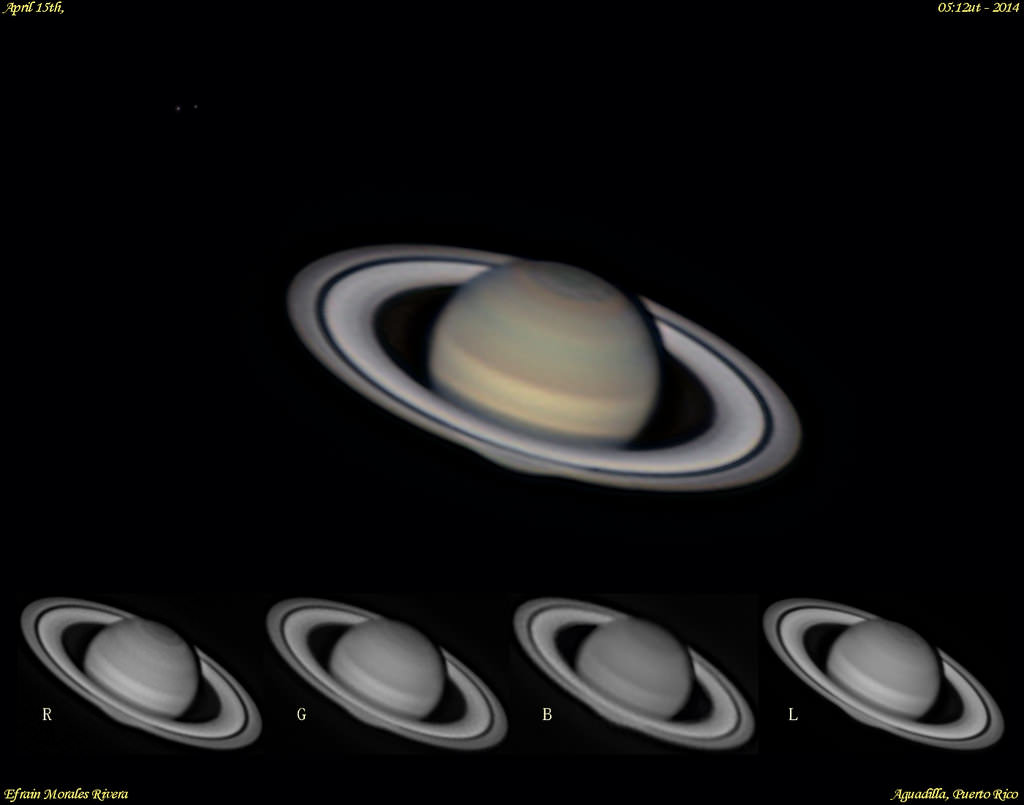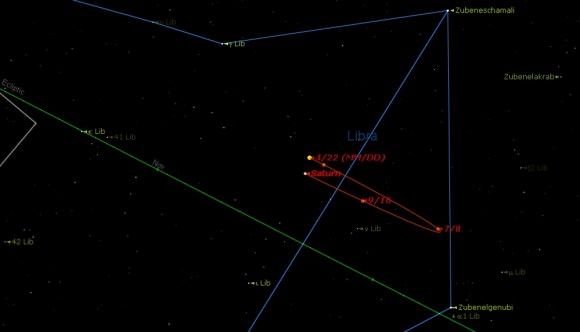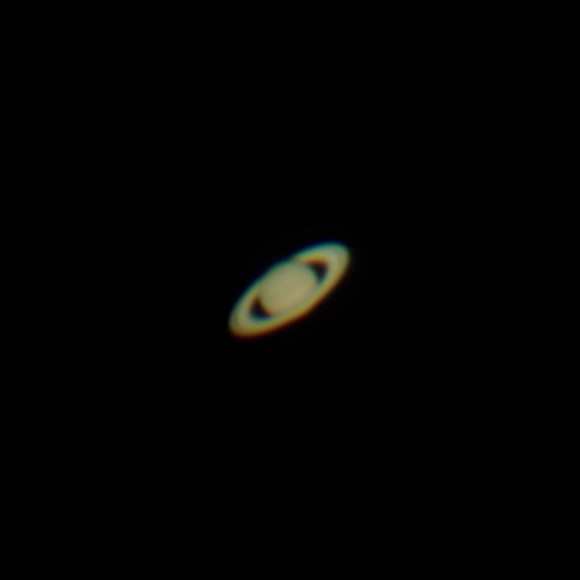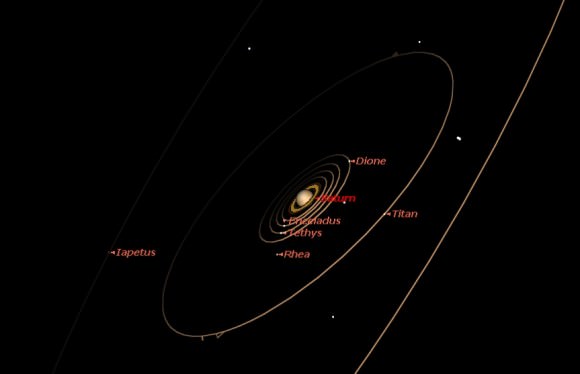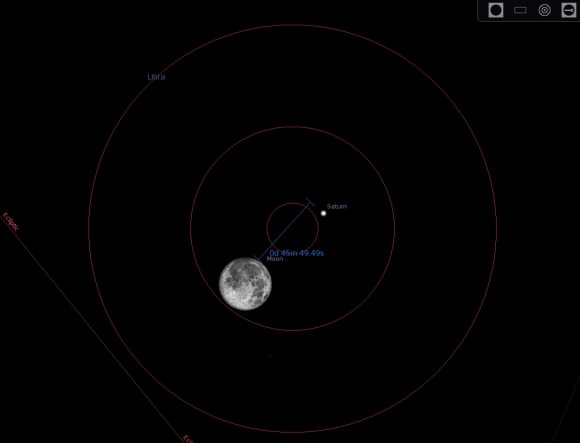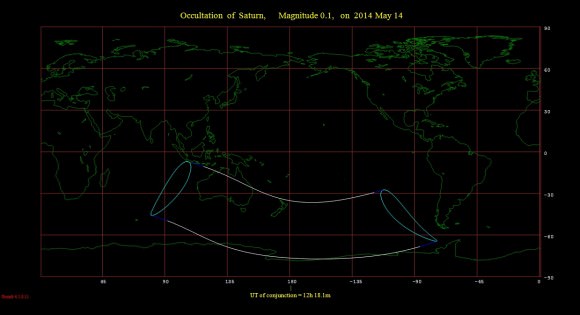Some terms in astronomy definitely have a PR problem, and are perhaps due for an overhaul. One such awkward term is occultation, which simply means that one celestial body is passing in front of another from an observer’s vantage point, nothing more, and nothing less. I know, the word ‘occult’ is in there, raising many a non-astronomically minded eyebrow and evoking astronomy’s hoary astrological past. You can even use it as a verb in this sense, as in to ‘occult’ one body with another. A planet or asteroid can occult a star, your cat can occult your laptop’s screen, and the Moon can occult a star or planet, as occurs on Tuesday, June 10th when the waxing gibbous Moon occults the planet Saturn for observers across the southern Indian Ocean region.
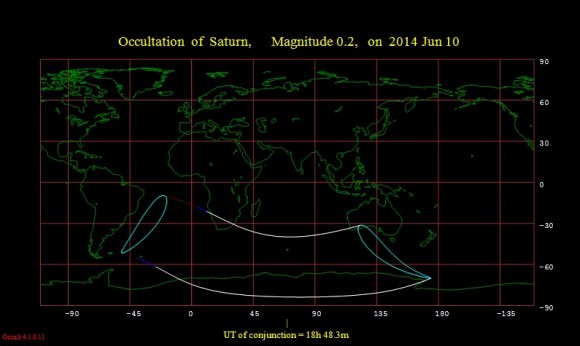
Of course, most of us will see a near miss worldwide. This is parallax in motion, as differing vantage points on the surface of the planet Earth see the Moon against a different starry background.
And we’re currently in the midst of a cycle of occultations of the planet Saturn in 2014, as the Moon occults it 11 times this year, nearly once for every lunation. The Moon actually occults planets 22 times in 2014, 24 if you count the occultations of 1 Ceres and 4 Vesta on September 28th, with Saturn getting covered by the Moon once again on the same date! Saturn tops the list in the number of times it’s occulted by the Moon this year, as it’s the slowest moving of the planets and fails to hustle out of the Moon’s way until November, after which a series of occultations of the ringed planet won’t resume again until December 9th, 2018.
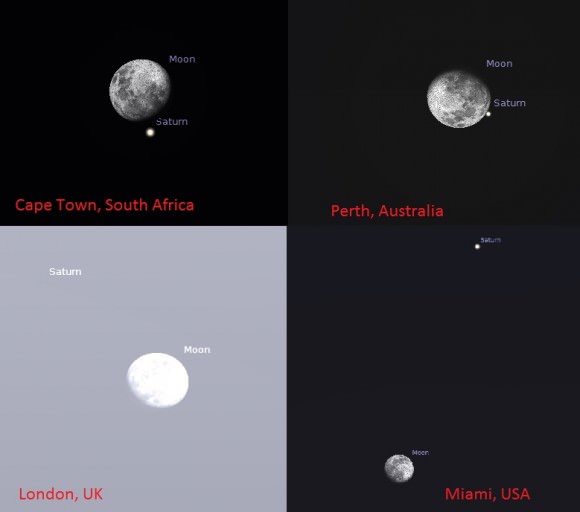
The shadow footprint of the June 10th occultation just makes landfall over southwestern Australia near Perth, a slice of Antarctica, and a scattering of southern Indian Ocean islands and the southern tip of South Africa in and around Cape Town. Note that the phase of the Moon is changing by about 30 degrees of ecliptic longitude as well during each successive occultation of Saturn. Next week’s event occurs as the Moon is at a 93% waxing gibbous illuminated phase this month and soon will occur when the Moon is a crescent. What’s especially interesting is the dark limb of the Moon is always the leading edge during waxing phases; this means that any stars or planets in its way get hidden (or ingress) under its shady nighttime edge.
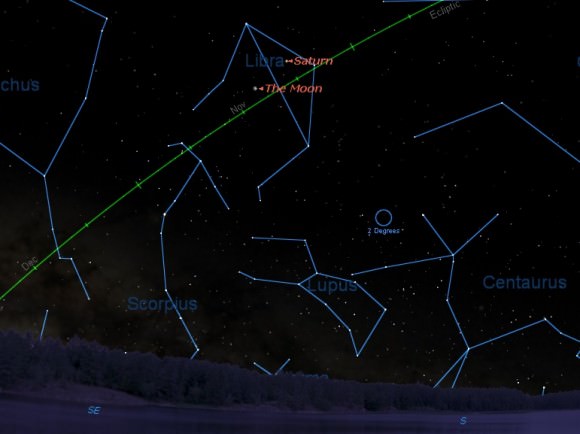
Central conjunction for Saturn and the Moon actually occurs at around 19:00 Universal Time on June 10th. The Moon rises at around 6:00 PM local on this date, and North American observers will see Saturn 4 degrees from the limb of the Moon and at an elevation of 28 degrees above the horizon at dusk. Unfortunately, the best occultation of Saturn by the Moon for North America in 2014 occurs in the daytime on August 31st, though you can indeed catch Saturn in the broad daylight through a telescope with good sky transparency if you know exactly where to look for it… a nearby daytime Moon certainly helps!
Unlike stellar occultations, blockages of planets by the Moon are leisurely events, and lend themselves to some pretty amazing video sequences. You can actually get a sense of the motion of the Moon as you watch it slowly cover the planet’s disk, in real time. It might also be fun to catch the occultation of Saturn’s brightest moon, +9th magnitude Titan. Hey, a moon occulting a moon, a sort of cosmic irony…
Saturn spends all of 2014 in the astronomical constellation of Libra. The Moon moves on to Full on Friday the 13th — triskaidekaphobics take note — at 4:13 UT/00:13 AM EDT. This is the closest Full Moon to the northward solstice which occurs on June 21st at 10:51 UT/6:51 AM EDT, meaning that while the Sun rides high in the sky during the day, the rising Full Moon transits low to the south at night. In the southern hemisphere, the reverse is true in June.
The June Full Moon is also known as per ye ole Farmer’s Almanac as the Strawberry or Rose Moon.
So there you have it, occultations were evoked no less than 21 times in the writing of this post. We need a modern, hip, internet ready meme to supplant the term occultation… y’know, like “ring of fire” for and annular eclipse or minimoon for an apogee moon, etc… blockage? Covering? Enveloping? Let us know what you think!

